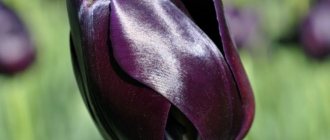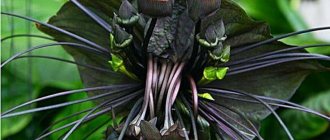In winter and summer, indoor flora requires some care. Experienced flower growers know which indoor flowers can be taken outside in the summer. As a rule, these are those plants whose homeland is the subtropics, tropics, desert and mountain regions.
In the summer, many indoor specimens grow, need an influx of fresh air, exposure to sunlight, and some also need temperature changes. But not all flowers can be taken outside or onto the balcony. Some specimens do not tolerate any impact associated with movement.
What indoor flowers can be taken outside in summer?
What indoor flowers are permissible to take outside in summer?
The flow of fresh air and sun have a beneficial effect on the growth of indoor plants. But it is not recommended to take all plants outside. Some specimens do not like to be moved. Which indoor flowers can be taken outside in the summer will tell you the origin of the plants and the conditions under which they are kept.
Important! Plants that are demanding on maintenance conditions (air humidity, absence of drafts, special temperature conditions) should not be taken outside. It is also not recommended to move sick and weak specimens, or those flowers that have recently been transplanted.
You can take the plants out into the fresh air when the air temperature remains stable at no lower than 15 °C. The difference between day and night indicators should not exceed 10 °C. If the indicators decrease, you will need to return the plants to the house.
Dracaena
Unpretentious in care and very popular among amateur flower growers, edged dracaena (Marginata Magenta) is considered a natural conditioner, and therefore enjoys well-deserved respect.
Dracaena loves room conditions without drafts
Belongs to the number of perennial indoor plants that come from Africa. For a tropical beauty, the temperature range considered to be ideal is:
- 18-25 °C in summer;
- 10-12 °C in winter. At this time, the plant is dormant.
An important condition for care is the absence of drafts, maintaining stable humidity and protection from sudden temperature changes. Does not like direct sunlight.
Is it possible to take dracaena outside in the summer? Not recommended; exposure to open sun can cause burns on delicate foliage.
In summer, dracaena needs a lot of light and humidity. You can take it outside, but you should place it so that direct sunlight does not hit the foliage.
Note! The shade-loving species Marginata Magenta have darker leaf colors. The lighter the leaves, the more light they need.
Anthurium
Anthurium (Anthúrium) is one of the most beautiful indoor flowers from the American tropics. He is incredibly picky about his conditions of detention. Dry air is strictly contraindicated for anthurium, so the flower requires constant moistening with a spray bottle.
Anthurium prefers warm, humid air in the house
Plants consider a veranda or a balcony protected from drafts to be the best option for the summer holidays. Anthurium does not tolerate temperature changes well, so taking it outside in the summer is not recommended.
Zamioculcas
Zamioculcas is native to tropical Africa. This flower is unpretentious to the conditions. It is recommended to put it outside in the summer. The plant tolerates drought and rainy weather well and does not need additional spraying.
Midday sun can cause burns, so you will need to place Zamioculcas in a semi-shaded place. If you place a flower in the shade, its leaves will begin to shrink. You should choose the optimal illumination.
Violets
Violet (Víola) is a plant of temperate climates. Delicate and fragile violet (Saintpaulia) loves high humidity and good light. Some amateur gardeners resort to planting plants in the garden in the summer under covering material. Such experiments often become fatal for the flower. Violet has fragile roots, so it can only be planted in a pot after selecting the necessary substrate. You can't take it outside. It is better to place pots of flowers on the kitchen window in good light. Here the humidity indicators are most optimal.
Schefflera
Schefflera (Schéfflera) is another representative of the tropics that prefers high humidity. A plant with amazingly beautiful foliage tolerates summer holidays outdoors or on the balcony.
Direct sunlight can reduce the decorative effect, so you will need to place the cheflera in such a way as to protect it from direct sunlight.
Important! The optimal temperature for sheflera is 22-25 °C in summer. Needs additional spraying in summer.
Dieffenbachia
Dieffenbachia is a guest from the tropics. Several types of Dieffenbachia are grown at home. They all prefer moist air with sufficient light and warmth.
Dieffenbachia will need to be sprayed periodically
The plant tolerates summer outdoors well, but it is worth protecting it from direct sunlight. A pot of Dieffenbachia can be placed on the balcony in the summer. Spraying will be required periodically. When the lower leaves fall off, pruning is required.
Note! Dieffenbachia has a caustic sap that causes irritation if it comes into contact with mucous membranes.
Chlorophytum
A South African guest of modern apartments, Chlorophytum is an unpretentious plant from the Liliaceae family. It prefers diffused light, the optimal temperature in summer is 21 ° C.
Chlorophytum looks good in hanging flowerpots
When the sun hits the leaves of a flower, the color becomes faded and the leaves are susceptible to drying out. This will weaken the plant. Chlorophytum can be taken outside or onto a balcony, placing the pots in partial shade. Responsive to fertilizing and spraying.
Prevent fungal infections
During the hot period, violets are acutely susceptible to fungus. Its attack is rapid: the cuttings begin to become transparent, and then they rot and the leaves wither and fall off.
The main culprit of fungal attack is summer heat, because it makes even an adult plant vulnerable to parasites, let alone young violets. Sometimes vascular bacteriosis “devours” the leaves in a matter of days, or even hours.
Take care of strengthening the immunity of your plants in advance - treat them with antifungal drugs so that in the heat the pest will not be able to overcome them.
But you shouldn’t get carried away with feeding violets on the eve of the summer season. This type of care is especially contraindicated in hot weather. The introduction of fertilizing interferes with the circulation of moisture in the roots, causing the plant to begin to feel unwell.
Found a violation? Report content
What indoor flowers can be placed on the balcony in early spring?
What indoor flowers can be kept in the bedroom
When can you take indoor flowers outside? In early spring the temperature difference is too high. Not every indoor plant can withstand such stress. Usually, subtropical specimens with leathery, dense foliage easily cope with such a surprise of nature:
- oleander;
- myrtle;
- laurel;
- Aralia.
Among the indoor flowers that will tolerate moving to the balcony in early spring: geraniums, orchids, fuchsia. When exactly to move the green pets to the balcony will be determined by the temperature outside the window and the conditions that can be created for a spring greenhouse.
Myrtle adapts well to spring stay on the balcony
Important! In order for the flowers to grow well, not get sick and delight with lush colors, it is worth considering the lighting of the balcony.
Flowers on the balcony depending on the direction of the world
Not all indoor flowers can be grown on the balcony. Any species must have a shallow root system due to limited space. When planning to place living decorations on the balcony, you need to plant plants in small pots or hanging flowerpots. For a small area, vertical gardening is appropriate.
Balcony landscaping option
Important! Climbing specimens and various vines are an excellent option for almost every balcony. These plants grow well in any light level. They can be taken out to the balcony in the spring, when the threat of return frosts has passed.
The most unpretentious and beautiful indoor flowers suitable for landscaping a balcony are marigolds, petunia, and nasturtium. If the balcony faces south, you will need to do the following:
- Place flower pots in boxes with sand to protect the roots from overheating.
- To avoid leaf burns, plants that were under artificial lighting in winter should be shaded.
Note! On the upper floors of high-rise buildings, climatic conditions do not allow setting up a balcony greenhouse.
To what temperature can you keep flowers on the balcony?
If indoor flowers are not returned to their usual place in a timely manner with the onset of cold weather, the plants wither, shed their leaves and take an extremely long time to recover. First of all, you need to take into account the climate of the region. In the northern regions, the first frosts occur already at the beginning of autumn.
When frost occurs, some flowers may die
Subtropical specimens need to return home when the night temperature drops to 12 °C. Hardier species can be brought indoors at 10°C at night.
Brief description of the species
It is easy to distinguish perennial violet (lat. Viola cornuta), since plants of this species have specific leaves. Their color is rich green, and their shape is ovoid with a pointed tip. Wild-growing specimens reveal inflorescences in a characteristic color scheme - you can find purple, snow-white, bluish and lilac shades. The petals are always simple and small in size, the diameter of the corollas does not exceed 2-4 cm. The number of flowers on each bush reaches up to 60 pieces, making the violet look impressive.
The height of the plant may vary - it all depends on the variety. There are both 8-centimeter and 25-centimeter specimens, which at first grow into small bushes, and over time turn into real flowering meadows. The decorative beauty of the plant was discovered in 1776, and since then it has become a permanent resident of many gardens and parks.
This type of violet received the name “horned” for a reason - all thanks to the process located at the back of the flower itself, which is shaped very much like a miniature horn.
Nowadays, many hybrids have been obtained from the wild-growing garden perennial violet, among which you can find large-flowered specimens of various color shades. The plant is loved by gardeners due to its decorative appearance and long flowering. Garden violet begins to bloom after the snow melts, reaches its peak in the middle of the summer season and delights until the very first frost.
What indoor plants can be kept on the balcony in winter?
What indoor flowers bring happiness and prosperity to the house?
You can create a green oasis on your own balcony only if this area is glazed. In winter, snow will not fall on such a balcony. When the thermometer drops to −10 °C outside, the temperature in the glazed space will remain above zero. If the temperature outside the window is −25 °C, the temperature on the balcony will be −5 °C. This climate allows some types of indoor plants to winter peacefully:
| List of professions | Regulatory issuance procedure |
| Builders | signal form; gloves; PPE for face and ears; Vibration reduction products |
| Drivers | mittens; warm suit; safety shoes |
| Loaders | overalls; gloves; jackets; trousers. |
| Sales staff | headscarves; gloves; robes |
| Agricultural employees | gloves; shoes; mittens. |
| Electrical workers | dielectric special gloves; safety shoes; headdress; outerwear; thermal underwear for dielectrics. |
Conifers tolerate winter well on the balcony
Junipers winter well on the balcony. They tolerate complete freezing of the earthen clod.
Control of pests and diseases of garden violet
Visual symptoms of violet disease include general wilting and decreased growth of foliage and the entire plant. This general lethargic condition is often accompanied by darkening and rotting of the leaves. This is followed by yellowing and death of the outer leaves until the entire plant dies. Blackened stem lesions may be present at or near the soil line.
Control can be difficult once plants are infected, so prevention is very important. It is helpful to avoid overwatering, especially in heavy soils, and to avoid watering directly on the plant. Plants that are highly symptomatic can be removed as recovery is unlikely. Paying attention to spacing is also beneficial because it improves air circulation between leaves and helps the soil dry out.
Inspect your violet plants frequently for any problems, such as thrips pests (small whitish or beige insects that look like little pieces of string on the flowers), mealybugs (look like small cotton balls hiding at the base of leaves or in the soil), or small spider webs. mites (tiny eight-legged relatives of spiders that hide under leaves).
To control leaf mealy bugs, pull them off by hand or wipe them with an alcohol swab, then rinse the plant in warm water to avoid alcohol damaging the leaves.
To control soil-borne mealybugs, use a chemical insecticide. Although chemicals are readily available, it is difficult to protect violets from mite infestation. Many experts recommend throwing out mite-infested plants before the pests spread to other plants.
Isolate new plants, preferably in another room, for at least six weeks and always wash your hands after handling them.
Use only pots and saucers that have been washed, rinsed, soaked in a chlorine bleach solution (1 part bleach to 15 parts water) and rinsed again. This prevents eggs and spores that may have been present in the used containers from being transferred to your new plants.
Treat fungal diseases, including mildew, botrytis blight and crown rot, by wiping the leaves with sulfur and then shaking it off for several days. But be very careful when using sulfur as it may cause an allergic reaction when used.
Source
What indoor plants can be planted in open ground in summer?
Kalanchoe outdoors in open ground - can it be planted outdoors?
Some types of indoor plants can be planted in the ground for the summer. The main condition is to choose a shaded area. A good option is to plant in the shade of trees. But even experienced gardeners do not always know which indoor flowers can be planted in the garden in open ground in the summer without the risk of losing or weakening the plants.
Important! Flowers should not be planted close to the tree, but at a distance of 1-1.5 m from the trunk. It is necessary that the flowers are in the shade of the crown.
Planting petunia in open ground
Geraniums are planted in areas that are lit from all sides. At first, yellowing of the leaves may be observed. But this phenomenon quickly passes, the leaves are restored.
Cacti are planted exclusively in sunny areas. To protect home plants from lack of moisture, you need to take care of hydration. To do this, holes are made next to the planting and filled with water.
List of indoor plants that can be planted in open ground in summer:
- geranium (pelargonium);
- balsam;
- succulents (aloe, Crassula, Kalanchoe);
- Golden mustache;
- hibiscus (indoor rose);
- Sansevieria;
- hippeastrum;
- dracaena;
- chlorophytum.
During the period when the temperature in the evening drops to 18-17 °C, the flowers should be transplanted into flowerpots and returned indoors.
Can violets be planted outside in summer?
Violet is a rather fragile flower. It is very popular due to its fast growth and long flowering period. Not everyone knows whether fragile violets can be planted outside in the summer.
Violet roots are very fragile
The tender roots of indoor plants are especially vulnerable. It is not advisable to plant violets in open ground. In addition, in the garden this species is susceptible to pest damage.
Is it possible to plant dracaena in open ground for the summer?
Dracaena is an unpretentious specimen from the tropics. Many gardeners are interested in whether it is possible to plant dracaena outside in the summer. To plant it in open ground, the following conditions must be provided:
- accommodation in the southern region. Dracaena is thermophilic;
- well-drained soils for planting in the ground;
- abundant watering. The plant prefers high humidity.
Thanks to its decorative effect, dracaena will transform the garden
With the help of dracaena you can create a unique design for your garden plot. It will require special care after planting: loosening, fertilizing. As soon as the plant gets stronger, gardeners will only have to monitor the soil moisture.
If you correctly approach the conditions for keeping indoor flowers outdoors, they will respond with lush color and accelerated growth. Your garden plot, veranda or balcony will be transformed with the help of tropical plant species. It is important to create the right conditions for them.
Scheme for sowing horned violet for seedlings
There is absolutely nothing complicated about properly planting horned violets for seedlings. The main thing is to stock up on suitable equipment and adhere to the optimal scheme. And the following guide will help you with this:
- Place the container on the desktop on which you plan to perform the procedure. You can take one box (the width depends on the number of seeds, and the height is about 7-10 cm) or several different cups (plastic cups or cassettes, suitable size 150-200 ml). Containers must be clean.
- If there are no holes at the bottom of the container to drain excess water, be sure to carefully make holes. And in order to further protect future seedlings from fungal diseases, it is useful to put a two-centimeter layer of perlite on the bottom of the container.
- Now you need to prepare the soil mixture (loose, fertile). Can be planted in standard soil for flower seedlings; or in the ground for indoor violets; or you can mix the soil at home: garden soil, sand, humus (optimal ratio 3:1:1).
- Prepare the seeds before planting. Firstly, it is advisable to buy products from a brand from a trusted manufacturer; the product must have a normal shelf life (not expired or expiring). Secondly, it is useful to treat violet seeds before sowing; a good way is to soak them in a growth stimulant (for example, Zircon, Epin or another); they must be prepared strictly according to the instructions.
- Fill the containers with soil, level the surface, and moisten generously with a sprayer. Let the moisture absorb a little.
- Now you need to sow the seeds of the horned violet: If you use a common box, then you need to make furrows 3 millimeters deep, with a gap of 3 cm. Plant the seeds in the furrow at a distance of 2 cm from each other.
- If you decide to plant in cups or plastic cassettes, then in each container you need to make a hole in the center (3 mm deep) and place the seed there.
How to plant violets correctly and what we need for this
Once you buy one Uzambara violet, and then it’s hard to stop - you want to place double, bordered, fancy and other varieties of Saintpaulias in your home, but such a hobby will turn out to be quite expensive. That’s why novice gardeners try to immediately learn how to plant violets, so that they can exchange planting material with each other, propagate those Saintpaulias that grow at home in a single copy, etc.











